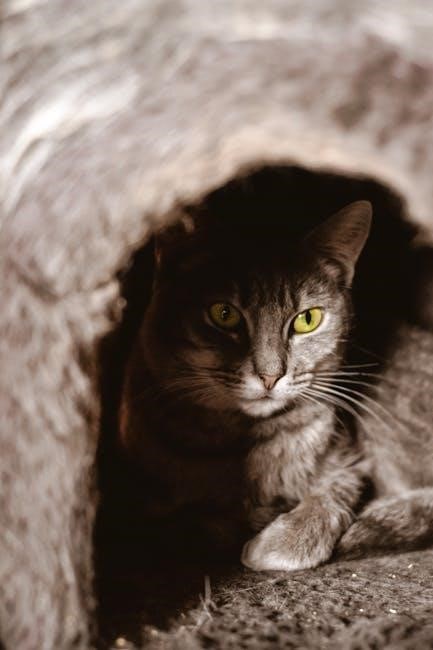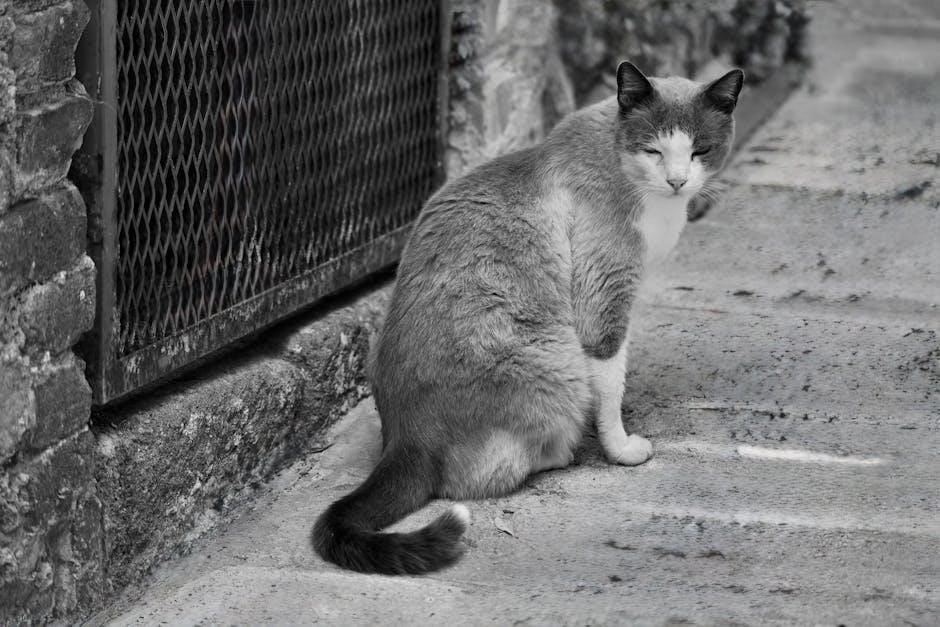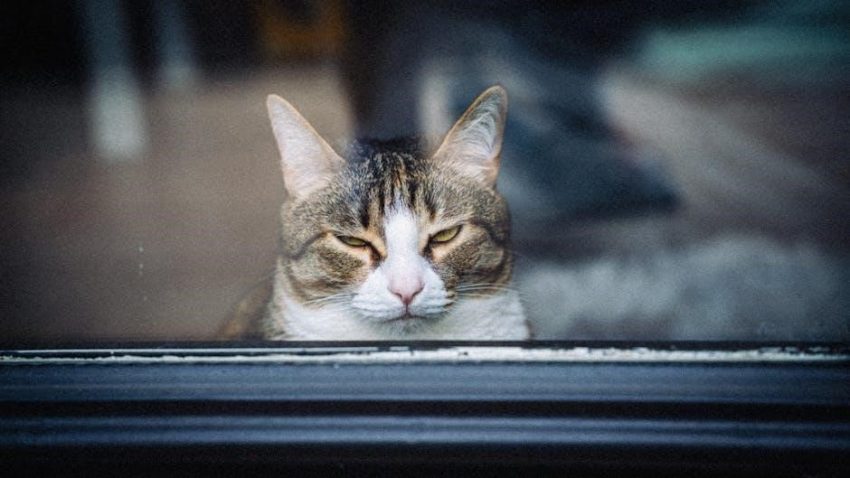A feline dental chart is a detailed record used by veterinarians to track a cat’s dental health, identify issues early, and guide treatment plans effectively.
1.1 What is a Feline Dental Chart?
A feline dental chart is a detailed diagram used to document and track a cat’s dental health, including teeth condition, gum status, and any dental procedures. It provides a visual representation of the mouth, highlighting issues like gingivitis or periodontal disease, and serves as a record for exams, treatments, and future reference.
1.2 Importance of Dental Charts in Feline Health
Feline dental charts are crucial for monitoring dental health, enabling early detection of issues like gingivitis or tooth decay. They aid in creating personalized treatment plans, ensuring proper care and preventing complications. Regular use of these charts promotes better oral health outcomes and improves communication between veterinarians and pet owners regarding a cat’s dental needs.

Components of a Feline Dental Chart
A feline dental chart includes the cat’s identification, examination date, medical history, dental findings, and treatment plans. It provides a comprehensive overview of the cat’s oral health status.
2.1 Feline Identification
Feline identification in dental charts includes the cat’s name, age, sex, breed, and color. This section ensures accurate record-keeping and personalized care for each patient, aiding in effective treatment and monitoring.
2.2 Dental Examination Date
The dental examination date is a critical component of the feline dental chart, documenting when the assessment was conducted. It helps track changes over time, monitor progress, and ensure timely follow-ups for maintaining the cat’s oral health effectively.
2.3 Medical History
Medical history is essential in a feline dental chart, as it records existing health conditions, medications, and past dental procedures. This information helps veterinarians identify potential risks and tailor treatment plans to the cat’s specific needs, ensuring comprehensive and safe dental care.
2.4 Dental Examination Findings
Dental examination findings document the condition of the cat’s teeth, gums, and overall oral health. This section includes notes on plaque, tartar, gingivitis, periodontitis, and tooth fractures or abscesses. Specific issues are highlighted to guide treatment plans and monitor progress over time, ensuring accurate and targeted dental care for the feline patient.
2.5 Diagnosis and Treatment Plan
The diagnosis and treatment plan section outlines specific dental issues identified during the examination. It includes recommended procedures, such as cleanings, extractions, or antibiotics, and home care advice. This plan ensures a clear path for addressing the cat’s dental health needs, providing both immediate and long-term solutions to prevent further complications and improve overall well-being.

How to Create a Feline Dental Chart
Design a clear, organized chart with sections for identification, exam findings, and treatment plans. Include visual diagrams and use standardized abbreviations for consistency and accuracy in documentation.
3.1 Design Considerations for Clarity
A clear feline dental chart should use a logical layout with separate sections for identification, medical history, and findings. Incorporate visual elements like tooth diagrams and color coding to highlight issues. Ensure readability by using consistent fonts and spacing. Standardized abbreviations and codes help maintain uniformity and reduce errors, making the chart user-friendly for veterinarians and pet owners alike.
3.2 Including Visual Representations
Visual representations, such as detailed diagrams of a cat’s mouth and tooth locations, enhance clarity in feline dental charts. Using symbols like circles for missing teeth or shading for decay helps identify issues quickly. Tooth numbering systems and color-coded charts further simplify documentation, making it easier to track changes and communicate findings to pet owners and other professionals effectively.
3.3 Using Abbreviations and Codes
Abbreviations and codes streamline documentation in feline dental charts. Common codes include “O” for missing teeth, “X” for extracted teeth, and “PP” for periodontal pockets. These symbols simplify recording and interpreting dental issues, ensuring consistency and clarity. Standardized codes help veterinary teams quickly understand a cat’s dental status, facilitating effective communication and accurate record-keeping.

Using the Feline Dental Chart for Diagnosis
Feline dental charts are essential for diagnosing issues like gingivitis, tooth decay, and periodontal disease. They provide detailed documentation, enabling accurate assessments and tracking of dental health over time effectively.
4.1 Identifying Dental Issues
Feline dental charts help identify issues such as gingivitis, tooth decay, and periodontal disease. They document conditions like plaque buildup, tartar, and gum inflammation, enabling early detection and precise documentation of dental problems for effective treatment planning and monitoring.
4.2 Monitoring Progress Over Time
Regular use of feline dental charts allows veterinarians to monitor a cat’s dental health progress. By tracking changes in conditions like plaque buildup or gum inflammation over time, charts provide a clear record of improvement or decline, aiding in adjusting treatments and ensuring long-term dental care effectiveness for the cat.
Treatment Planning with the Feline Dental Chart
A feline dental chart is essential for creating a comprehensive treatment plan, guiding recommendations, and ensuring adjustments are made based on the cat’s specific dental needs.
5.1 Developing a Comprehensive Plan
A feline dental chart aids in creating a detailed treatment plan, ensuring all dental issues are addressed. It includes diagnosis, procedure recommendations, and follow-up care, tailored to the cat’s specific needs. This structured approach helps veterinarians and pet owners collaborate effectively, promoting optimal oral health and long-term well-being for the cat.
5.2 Communicating with Pet Owners
The feline dental chart serves as a clear communication tool, helping veterinarians explain diagnoses, treatment options, and home care recommendations to pet owners. It ensures owners understand their cat’s dental needs, fostering collaboration and adherence to care plans. Visual representations and detailed notes make complex information accessible, empowering owners to make informed decisions for their cat’s oral health.
Preventive Dental Care
Preventive dental care includes regular check-ups, home hygiene routines, and avoiding hard chew objects to maintain feline oral health and prevent issues like tartar buildup and gum disease.
6.1 Routine Check-Ups
Routine dental check-ups for cats are essential for early detection of issues like gingivitis and tartar buildup. Veterinarians use dental charts to monitor progress and ensure comprehensive oral health. Regular exams help prevent severe dental problems, promoting overall feline well-being and maintaining a healthy, pain-free mouth. Consistency in check-ups is key to long-term dental care.

6.2 Home Care Recommendations
Home care is vital for maintaining feline dental health. Recommendations include providing dental-friendly toys, avoiding hard objects that may damage teeth, and using dental-specific diets. Regular toothbrushing with cat-safe toothpaste can reduce plaque and tartar. Veterinary-approved dental chews and toys can also help promote oral hygiene. Consistent home care supports professional dental treatments and enhances overall feline well-being.

Case Study
A completed feline dental chart for a cat named Max revealed advanced periodontal disease. The chart documented tartar buildup, gum recession, and missing teeth, guiding targeted treatment and improving Max’s quality of life significantly.
7.1 Example of a Completed Chart
A completed feline dental chart for a cat named Max included his identification, examination date, and medical history. Findings noted moderate tartar buildup, gingivitis, and a missing tooth. The diagnosis highlighted periodontal disease, leading to a treatment plan of dental cleaning, antibiotic therapy, and a recommendation for regular home care to prevent further issues.
7.2 How the Chart Aids in Decision-Making
The feline dental chart provides a clear visual and detailed record, enabling veterinarians to identify issues early and guide treatment plans. It helps monitor progress over time, ensuring tailored care and improving outcomes. By documenting findings, the chart supports informed decisions, from diagnosis to treatment, and aids in communicating effectively with pet owners about their cat’s dental health needs.
The Role of the Veterinarian
Veterinarians play a crucial role in maintaining feline dental health by conducting thorough exams, documenting findings, and ensuring compliance with dental standards to provide optimal care for cats.
8.1 Conducting Thorough Exams
Veterinarians perform detailed dental examinations, assessing each tooth and gum for signs of disease. They use feline dental charts to document findings, ensuring accurate records for diagnosis and treatment planning. Regular exams help identify issues like gingivitis or periodontal disease early, promoting preventive care and improving feline oral health outcomes significantly.
8.2 Maintaining Accurate Records
Veterinarians ensure precise documentation of feline dental exams, treatments, and progress using dental charts. Accurate records help track dental health over time, inform future care decisions, and maintain continuity of treatment. Detailed notes also support legal and ethical standards, ensuring transparency and accountability in patient care.

8.3 Ensuring Compliance with Dental Standards
Veterinarians adhere to established dental standards when creating and using feline dental charts. Compliance ensures consistency, accuracy, and quality in dental care. By following standardized procedures and documentation practices, veterinarians meet professional guidelines, providing reliable and effective care for feline patients. This adherence promotes trust and excellence in veterinary dental services.

The Role of the Pet Owner
Pet owners play a vital role in maintaining their cat’s dental health by following vet recommendations and monitoring signs of dental issues, ensuring timely interventions.
9.1 Recognizing Dental Issues
Pet owners should watch for signs like bad breath, tartar buildup, and gum redness. Early recognition of issues such as gingivitis or periodontitis can lead to timely veterinary care, improving outcomes.
9.2 Adhering to Vet Recommendations
Following veterinary advice is crucial for maintaining feline dental health. This includes adhering to treatment plans, home care routines, and scheduling regular check-ups. Pet owners should implement recommended preventive measures to ensure optimal dental well-being and prevent progression of dental issues, ultimately enhancing the cat’s quality of life.

Legal and Ethical Considerations
Legal and ethical considerations in feline dental care involve compliance with veterinary regulations, maintaining patient confidentiality, and ensuring accurate record-keeping for all treatments and assessments.
10.1 Compliance with Veterinary Regulations
Compliance with veterinary regulations ensures that feline dental care meets standardized protocols, including accurate record-keeping and ethical practices. Using a feline dental chart adheres to these requirements, providing a legal and ethical framework for diagnosis, treatment, and patient monitoring. This ensures transparency and accountability in all veterinary procedures and documentation.
10.2 Maintaining Patient Confidentiality
Maintaining patient confidentiality is essential in veterinary care. Feline dental charts contain sensitive information, so they must be stored securely, both physically and digitally. Access should be restricted to authorized personnel to prevent unauthorized disclosure. Ensuring confidentiality builds trust between pet owners and veterinarians, safeguarding the privacy of both the owner and their cat’s health records.
Feline dental charts are essential tools for monitoring and improving cats’ dental health. They enable early detection of issues, guide treatments, and promote regular check-ups for long-term well-being.
11.1 Summary of Key Points
Feline dental charts are vital tools for tracking a cat’s dental health, identifying issues like gingivitis or periodontitis, and guiding treatment plans. They include details such as tooth condition, medical history, and diagnostic findings, ensuring comprehensive care. Regular use of these charts promotes early detection, effective treatment, and preventive measures, enhancing overall feline well-being and longevity.
11.2 Final Thoughts on Feline Dental Care
Feline dental care is crucial for maintaining cats’ overall health and quality of life. Regular dental check-ups, proper charting, and preventive measures can prevent severe issues like periodontitis. By prioritizing dental health, owners and veterinarians can ensure early detection and effective treatment, fostering a longer, healthier life for feline companions.
Future Trends
Future trends include digital advancements in dental charting, AI integration for diagnostics, and 3D imaging for precise dental assessments, enhancing feline dental care and record-keeping efficiency.
12.1 Advances in Dental Chart Technology
Advances in dental chart technology include digital platforms with AI-powered diagnostics, real-time data integration, and 3D imaging for precise dental assessments. These tools enhance accuracy, streamline record-keeping, and improve communication between veterinarians and pet owners, ensuring better monitoring of feline dental health and more effective treatment planning.
12.2 Integrating Charts with Overall Health Records
Integrating dental charts with overall health records enhances holistic patient care by linking dental findings to systemic health issues. This unified approach helps veterinarians detect conditions like diabetes or kidney disease early, improving treatment outcomes and ensuring comprehensive care for feline patients.
References
References include veterinary dental guides, PDF templates, and academic articles on feline dental care, providing credible sources for creating and understanding dental charts.
13.1 Sources Used in the Article
Sources include veterinary dental guides, PDF templates, and academic articles. Key resources feature IDEXX Telemedicine Consultants, Liberty Dental Plan referral forms, and detailed dental assessment charts from EzRay Air VET systems.

